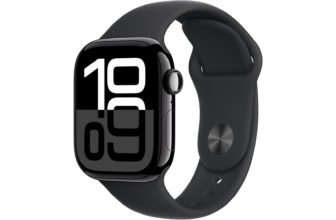
Check out our latest products
Do you have an old or unused computer lying around your house? If you’re planning to sell, give away, recycle, or donate the device, there are a few steps you need to take before you say goodbye.
If the storage drive is still in working order, you’d want to back up your personal files to another location or make sure they’re synced elsewhere. If you have any licensed software, deactivate and remove it. You can then wipe the drive to remove any traces of personal data. You’ll then want to ensure that the computer is usable for the next person who gets it, or unusable if it’s headed for the nearest recycling center. Here’s how to prepare a Windows PC or Mac for proper disposal.
1. Back Up Your Files
Your first step should be to back up any documents, photos, videos, and other files saved on your computer. You can turn to different online backup tools, but simpler and cheaper options are available. For a cloud-based file syncing service, such as Microsoft OneDrive, Google Drive, or Dropbox, the process is relatively simple since your personal files are already stored online and across other devices. Just make sure all the files you want to retain have been included.
(Credit: PCMag / Microsoft)
If your personal files are stored only on the computer you plan to discard, you’ll need to back them up to another location. Windows offers the built-in File History tool to save key folders and files to an external drive; Mac users can turn to Time Machine.

(Credit: PCMag / Microsoft)
2. Transfer Software
Before you dispose of your device, make sure that any licensed software can be transferred to the new computer. Some applications, such as Adobe Acrobat or Adobe Creative Cloud, offer a deactivation feature through which you’re able to transfer the license to a different PC. If you can’t find a transfer option, contact the vendor to ask how the license can be removed from one PC and activated on another. Make sure you copy any license or product keys to help you reactivate each program.

(Credit: Adobe)
3. Wipe the Storage Drive
After you back up the necessary files, you then want to wipe the drive. You can reset and reinstall the operating system to factory conditions and remove all your personal data at the same time. The reset process will differ slightly based on your version of Windows and what components are inside your Mac.
However, you may also prefer to use a third-party tool, especially if sensitive data is stored on the drive. Such tools as Disk Wipe, Active KillDisk, and AOMEI Partition Assistant offer more robust and flexible wiping methods.
Windows 8.1
In Windows 8.1, go to Settings > Change PC settings > Update and recovery > Recovery. Click the Get started button under the Remove everything and reinstall Windows section. The PC will tell you that all your personal files and apps will be removed and settings will be changed back to their defaults.

(Credit: PCMag / Microsoft)
Click Next, and you’re offered a choice of just removing your files or fully cleaning the drive. Whether you plan to give away the PC or recycle it, choose Fully clean the drive. Click the Reset button to proceed. The PC will then restart, cleaning the drive and reinstalling Windows.

(Credit: PCMag / Microsoft)
You’ll then see a setup screen. If you plan to give the computer away, just turn off the PC at this point. The next person who starts the computer will be taken through the setup process.

(Credit: PCMag / Microsoft)
Windows 10
In Windows 10, go to Settings > Update & security > Recovery. Click the Get started button under the Reset this PC section. You’re then asked what you wish to remove; choose the Remove everything option.

(Credit: PCMag / Microsoft)
At the next screen, select the Local reinstall option and then click Change settings at the Additional settings screen. Turn on Clean data and click the Confirm button. This will ensure that all information is thoroughly removed and can’t be recovered using conventional recovery methods.

(Credit: PCMag / Microsoft)
Click Next, review the settings you’ve chosen, and click Reset. When the PC restarts, you’ll see the Windows 10 setup screen. Just turn the computer off at this point.

(Credit: PCMag / Microsoft)
Windows 11
In Windows 11, go to Settings > System > Recovery. Select Reset this PC under Recovery options. Click the Reset PC button, then choose Remove everything. At the next screen, choose Local reinstall.
Get Our Best Stories!

Get the Most Out of Your Technology
By clicking Sign Me Up, you confirm you are 16+ and agree to our Terms of Use and Privacy Policy.
Thanks for signing up!
Your subscription has been confirmed. Keep an eye on your inbox!

(Credit: PCMag / Microsoft)
At the Additional settings screen, click the Change settings link. Turn on Clean data and click Confirm to ensure that all information on the drive is thoroughly removed and can’t be recovered using conventional data recovery methods.

(Credit: PCMag / Microsoft)
Click Next and then select Reset. After the drive is wiped and Windows is reinstalled, the first setup screen appears. You can then shut off the PC.

(Credit: PCMag / Microsoft)
macOS
How you wipe your Mac’s drive differs based on your OS version. On a Mac with macOS Monterey or earlier, click the Apple icon and select System Preferences. Click System Preferences on the menu bar and choose Erase All Content and Settings.
Recommended by Our Editors

(Credit: PCMag / Apple)
With macOS Ventura or higher, click the Apple icon and select System Settings. Head to General > Transfer or Reset and then click Erase All Content and Settings. Enter your Mac password and click Continue at the Erase All Content and Settings screen.

(Credit: PCMag / Apple)
No matter which version of macOS you run, this process will erase all settings, media, apps, and data for all accounts and volumes on the drive as well as sign you out of iCloud, delete Touch ID fingerprints, disable location services, unpair Bluetooth devices, and remove Apple Wallet items.

(Credit: PCMag / Apple)
You can also use the Disk Utility tool in Recovery Mode to wipe your Mac’s drive. For an Intel-based Mac, restart the computer and hold Command-R until you see the Apple logo. With an apple Silicon Mac, restart and hold down the power button until you see the start up options window; click the Options icon and click Continue.

(Credit: PCMag / Apple)
From the Recovery Mode menu, choose Disk Utility. Select your Mac’s primary drive, click the Erase icon, and choose Erase Volume Group (or Erase) to wipe the drive. Select the Erase button and then click Erase Mac. Click Erase Mac and Restart to kick off the process. Whichever process you use, wait for the drive to be wiped then shut it down after your computer has restarted. If someone else intends to use it, that person can activate the computer and reinstall the OS.

(Credit: PCMag / Apple)
4. Destroy Your Drive
If you plan to recycle your computer and are concerned about access to sensitive data on the hard drive, software options may not be enough. The only sure way is to physically destroy the drive. For this, you can turn to a degausser, which will magnetically erase all data on a drive and make it impossible to recover.
Degaussing tools can be expensive, though. A cheaper option is to physically remove the drive from the computer. You can then use it as an external drive using a SATA-to-USB adapter, dock, or enclosure. Otherwise, just destroy the drive with a few solid whacks of a hammer. Just be careful as you do this; wear gloves and safety goggles. And make sure the drive is fully destroyed.

(Credit: StarTech.com)
5. Recycle the Computer
If you do plan to dispose of the PC, don’t throw it away with the rest of the usual trash. Because computers contain electronic parts, they need to be discarded properly. You can recycle your electronics at big box stores like Best Buy and Staples. The Apple Trade In program will also allow you to use your old device to help pay for a replacement.
Additionally, check with your town’s district office to see if there are recycling facilities or disposal sites where you can drop off e-waste. Run a web search for local recycling centers to find out if any will accept computers.

(Apple)
About Lance Whitney
Contributor

Read the latest from Lance Whitney

![[K-Beauty] Rose Vitamin Oil to Foam | Daily Face Wash Oil Based Cleanser | Korean Rose Oil Foaming Face Cleanser | Hydrating Facial Cleanser for Dry Sensitive Skin (3.88 oz)](https://i1.wp.com/m.media-amazon.com/images/I/71sX7yIuXRL._SL1500_.jpg?w=300&resize=300,300&ssl=1)





![[ 8 Pack ] Plastic Storage Baskets With Lids, Small Pantry Organization, Stackable Storage Bins, Household Organizers for Cabinets, Countertop, Drawers, Under Sink or On Shelves,Gray](https://i1.wp.com/m.media-amazon.com/images/I/81NMRFDwXYL._AC_SL1500_.jpg?w=300&resize=300,300&ssl=1)
![[Luxury] Kitchen Soap Dispenser Set – 16OZ Black Glass Bottle, Stainless Steel Pump, Instant Dry Tray, Waterproof Labels, Non-Slip Silicone Pad, and Dish Brush | Upgrade for Your Kitchen and Bathroom](https://i3.wp.com/m.media-amazon.com/images/I/71TQcJWiGtL._AC_SL1500_.jpg?w=300&resize=300,300&ssl=1)





